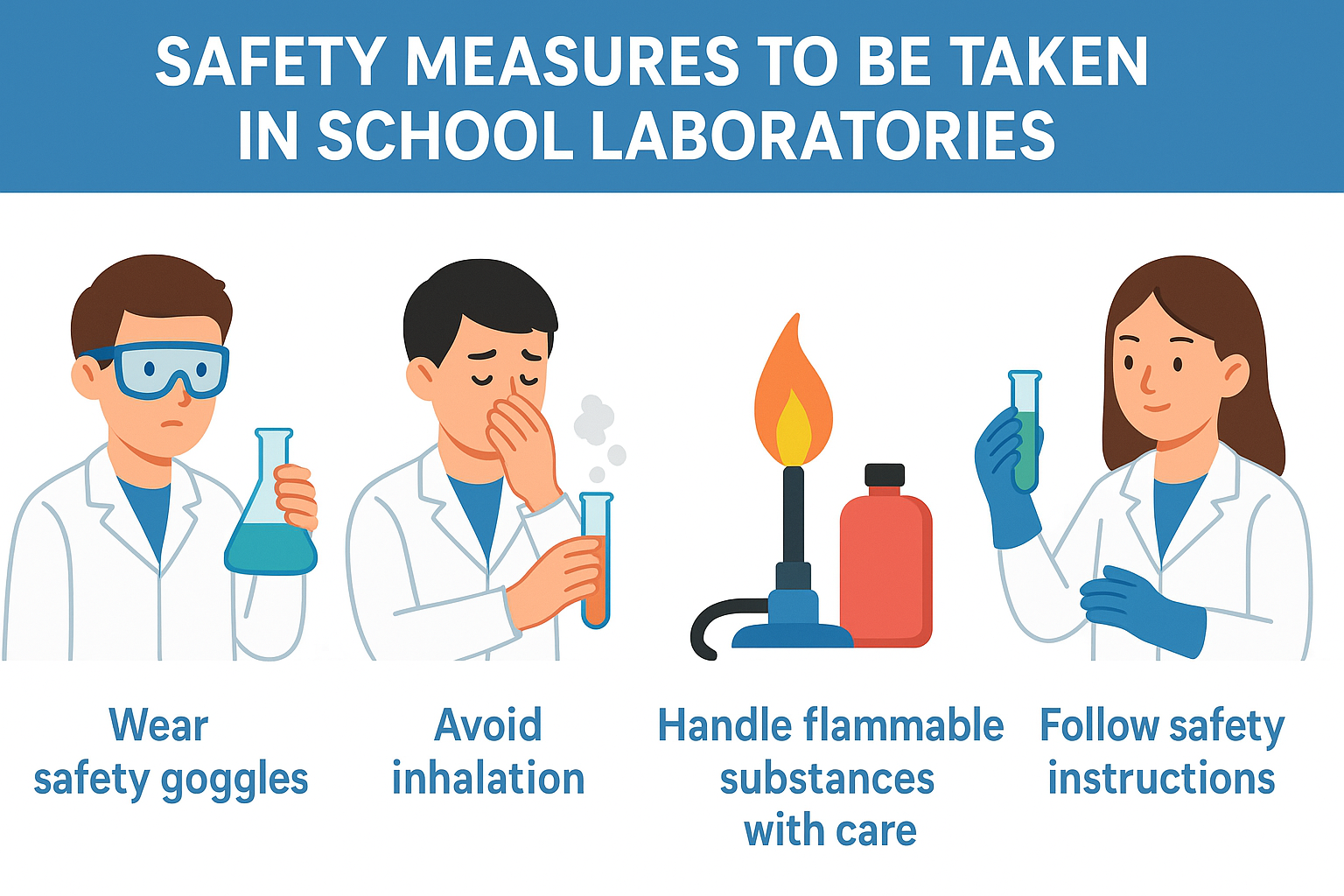A school laboratory is one of the most exciting places for students. It’s where science comes alive—where experiments turn classroom theories into real experiences. But along with the excitement comes responsibility. Handling chemicals, glassware, and equipment requires care, and without proper safety measures, a small mistake can quickly turn into a serious accident.
To make labs a safe and fun space for learning, here are some essential safety measures every student and teacher should follow.
- Start with Proper Training
Before experiments, students must learn lab safety basics. Teachers should explain correct equipment use, chemical handling, and emergency steps. Posters and repeated reminders help reinforce rules. Knowing what to do in case of fire, spills, or injuries prepares students to act calmly. Proper training builds confidence and ensures a safe environment for exploration.
- Always Wear Protective Gear
Protective gear is non-negotiable. Lab coats prevent spills on clothes, goggles shield eyes from splashes, and gloves protect hands from chemicals. Long hair should be tied back, and loose clothing avoided. Even footwear matters—closed shoes are safer than sandals. Teachers leading by example encourage students to treat safety seriously. These simple steps create a protective shield in the laboratory.
- Handle Chemicals with Care
Every chemical should be respected. Bottles must be clearly labeled and stored properly. Students should never taste or directly smell substances, and spills must be reported immediately. Measuring tools like droppers or pipettes should be used instead of direct contact. Proper disposal is equally important—waste chemicals should go in designated containers. Careful handling prevents accidents and keeps experiments smooth.
- Be Gentle with Equipment
Laboratory tools are delicate yet powerful. Glassware like test tubes and beakers should be handled carefully to prevent breakage. Bunsen burners and electrical devices must only be used under supervision. After experiments, switches should be turned off, and equipment stored properly. Respecting lab tools ensures both safety and longer equipment life, while careless handling can quickly cause accidents.
- Be Ready for Emergencies
Every lab must be prepared for accidents. First aid kits, fire extinguishers, and eye wash stations should be accessible. Students must know emergency exits and how to respond if something goes wrong. Regular drills help build confidence, ensuring no panic in real situations. Being prepared means small incidents can be managed quickly before turning serious. Safety readiness saves lives.
- No Food, No Fun Play
Eating, drinking, or playing inside the lab is strictly unsafe. Even small distractions or pranks can cause serious injuries when chemicals or flames are involved. Students must remain disciplined, focused, and respectful of the space. Maintaining a professional attitude not only ensures safety but also builds good learning habits. A laboratory is for science—not for careless fun.
Conclusion
A school laboratory is a place of discovery, but it requires responsibility and caution. By following safety measures such as proper training, wearing protective gear, handling chemicals carefully, and preparing for emergencies, accidents can be minimized. Teachers and students must work together to create a safe and secure environment where curiosity and learning thrive without risk.

